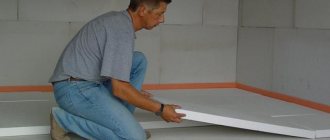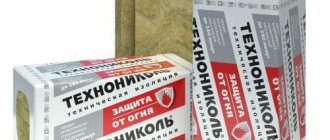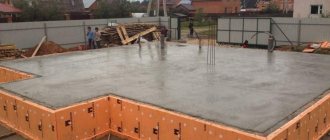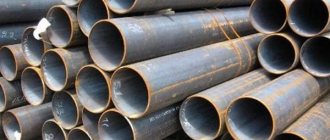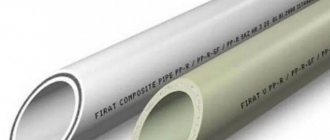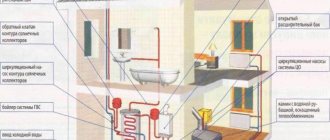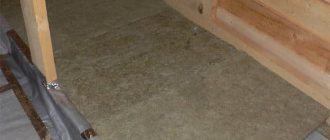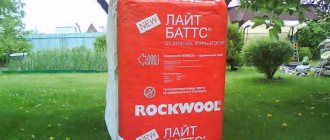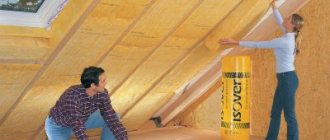Today in this article we will look at the current issue in our time about the service life of insulation in the table. As a rule, houses, buildings and other structures are insulated for a long time, so materials are needed as reliable and of the highest quality as possible . Many people believe that various types of insulation do not last more than 30 years. Taking into account the fact that the wall that is being insulated lasts about 100 years, we come to the conclusion that during this time the procedure must be done 2-3 times. If you calculate the cost of such an update, it may not please you.
What is stone wool?
Mineral thermal insulation includes three types of materials: stone wool, glass wool and slag wool. The difference lies in the raw materials used to produce the product.
Stone wool is a heat and sound insulating material, which is made mainly from the melt of igneous rocks.
One of the main components of raw materials for the production of stone wool are igneous rocks of the gabbro-basalt group and metamorphic rocks similar in chemical composition, as well as marls.
TechnoNIKOL stone wool is a non-flammable insulation material, ideal for thermal insulation, fire protection, and creating acoustic comfort indoors.
Materials for insulating walls and facades of apartment buildings and private houses - TECHNONICOL
The review contains all materials for thermal insulation of facades and walls that are suitable for private construction and renovation. You will learn what different types of insulation are intended for, what their main properties are, where and how they can be installed. You will be able to choose a material that is ideal for thermal insulation of the walls of your home and will help you avoid mistakes or unnecessary expenses.
TECHNOBLOCK stone wool slabs
Universal material for heat and sound insulation.
Application area:
TECHNOBLOCK is recommended for use in layered masonry (wall-insulation-cladding), including for thermal insulation of building facades with various types of finishing. It is also possible to install slabs as the first internal thermal insulation layer in curtain air-permeable facades with a two-layer insulation scheme.
10 cm of TECHNOBLOCK stone wool is equal in heat-saving capacity to 38 cm of timber or 140 cm of clay brick masonry.
Material Features:
- does not shrink;
- material service life 50 years;
- reduces heating costs;
- resistant to rodents and mold;
Material characteristics:
- Plate thickness from 50 to 200 mm, density 40-70 kg/m3.
- Water absorption no more than 1.5%.
- Thermal conductivity coefficient ƛ25 from 0.036 to 0.037 W/m*K.
- The slabs are easy to install - they can be cut with available tools (a knife or a saw with fine teeth) and adjusted to the desired size.
Important!
All mineral wool is treated with water-repellent additives, which gives the insulation additional water-repellent properties.
Rocklight mineral wool slabs
Thermal and sound insulating slabs made of stone wool based on basalt rocks are suitable for low-rise and cottage construction.
Application area:
ROCLITE slabs are used as heat and sound insulation in attics, frame walls and walls to be finished with siding.
ROCLITE, when used for thermal insulation, provides not only reliable insulation, but also environmental comfort.
Material Features:
- reduces heating costs;
- service life 50 years;
- not susceptible to rodents and mold.
Material characteristics:
- Plate thickness from 50 to 150 mm, density 30-40 kg/m3;
- Water absorption no more than 2%;
- Thermal conductivity coefficient ƛ25 = 0.039 W/m*K;
- The material is not flammable - the melting point of the fibers exceeds 1000° C;
- Not susceptible to rodents or mold.
The material has a high sound absorption coefficient, which allows it to be used in floors, ceilings and various partitions.
Mineral wool slabs TECHNOFAS COTTAGE
Heat and sound insulating slabs made of stone wool based on basalt rocks.
Application area:
designed for insulating walls of low-rise buildings (height up to 10 m). Using the material, you can insulate internal walls on glazed loggias and balconies, along flights of stairs and landings of multi-story buildings.
Material characteristics:
- The thickness of the slabs is from 50 to 200 mm, which will maximize the usable space of the interior;
- They do not absorb moisture - the water absorption of the slabs is no more than 1.5%;
- Thermal conductivity coefficient ƛ25 = 0.038 W/m*K;
- Non-flammable material - safe for indoor insulation;
- Environmentally friendly - does not affect human and animal health.
The service life of mineral wool is comparable to the service life of a building and is 50 years. At the same time, during the entire period of operation the material does not lose its properties.
Thermal insulation boards LOGICPIR Wall
This is a new generation of environmentally friendly and healthy insulation materials.
What is the difference between TechnoNIKOL stone wool and other types of insulation?
TechnoNIKOL stone wool is a non-flammable material. Stone wool fibers can withstand temperatures without melting up to 1000 ºС. Stone wool products have heat and sound insulation properties due to their open porous structure. The air enclosed in the pores of stone wool has low thermal conductivity and is in a stationary state, which is what determines its excellent thermal insulation qualities. Due to its open porosity, stone wool is a vapor-permeable material, the vapor permeability is approximately 0.25 - 0.35 mg/m·h·Pa. The density of thermal insulation can vary widely from approximately 30 kg/m³ to 220 kg/m³, therefore, the physical and mechanical characteristics also differ, so rigid slabs can withstand a distributed load of 70 kPa (7000 kg/m²!).
Products can be produced with a coating of aluminum foil, kraft paper, fiberglass, etc.
Thermal resistance of materials
| Red brick masonry, wall thickness 0.25 m (one brick) | 0,36 |
| Red brick masonry, wall thickness 0.38 m (one and a half bricks) | 0,53 |
| Sand-lime brickwork, wall thickness 0.25 m (one brick) | 0,30 |
| Sand-lime brickwork, wall thickness 0.38 m (one and a half bricks) | 0,44 |
| Masonry made of gas-foam blocks, wall thickness 0.2 m. | 0,69 |
| Masonry made of gas-foam blocks, wall thickness 0.3 m. | 0,81 |
| Wooden beam, 100 mm. | 0,71 |
| Wooden beam, 150 mm. | 1,07 |
| Metal 0.5 – 1.0 mm. (hangars, pavilions, construction trailers, roofs of houses) | 0,1 |
It follows from the table that, in accordance with the requirements of SNiP, the thickness of the walls of a residential building should be:
The fulfillment of these conditions in modern reality is absolutely unrealistic. That is why the use of insulation today is a necessary necessity. The lower the thermal conductivity of the insulation, the smaller its layer.
How does TechnoNIKOL stone wool reduce noise levels?
TechnoNIKOL stone wool slabs have good sound absorption of airborne and impact noise in a wide frequency range. Sound absorption is provided by the fibrous structure, which effectively dampens the sound wave.
TechnoNIKOL stone wool is a highly porous material with a flexible skeleton. The mechanism of absorption of sound energy is as follows: sound waves, encountering the surface of a porous material, cause the air inside the pores to vibrate. The pores have great resistance to the flow of air passing through them, due to which the sound wave is damped and absorbed when passing through the structure of the material; as a result of viscous friction, part of the sound energy is converted into heat.
Also, TechnoNIKOL stone wool slabs are used in the construction of floating floors; due to the high sound insulation characteristics (relative compression and elastic modulus), the material effectively reduces impact noise.
Extruded polystyrene foam
Extrusion is not susceptible to moisture and rotting; it is a very durable and easy-to-install insulation.
Technoplex slabs have high strength and compression resistance and do not decompose. Due to its technical characteristics, technoplex is used to insulate blind areas and foundations of buildings. Extruded polystyrene foam is durable and easy to use.
In what soundproofing structures can TechnoNIKOL stone wool be used?
TechnoNIKOL stone wool helps combat all types of noise – both airborne and impact. In the “application” section on the website www.teplo.tn.ru you can see various solutions for sound insulation that use stone wool-based material:
- to combat airborne noise, suspended ceilings, joist floors, partitions and internal soundproofing lining are used;
- to combat impact noise - floating floor systems and floors with joists.
TechnoNIKOL Corporation received a conclusion from the Scientific Research Institute of Building Physics (NIISF RAASN) on the topic: “Measurement of sound insulation properties of structures using stone wool, production, which reflects the test results of the above-described sound insulation solutions indicating noise reduction indices in dB.
It must be remembered that sound insulation is a whole set of measures aimed at achieving acoustic comfort. First of all, you need to find out the source of the noise.
Sometimes the source itself is located outside the building, but often the cause is located inside, for example: ventilation systems, pumping equipment, elevators, garbage chutes and other engineering equipment, noisy neighbors. Only then should the necessary soundproofing measures be taken.
Details
Advantages of frame houses
Among the advantages of houses built using frame technology are the following:
Extremely high alignment speed.- Ease of construction (frame-type houses can be assembled with your own hands, because each house kit comes with detailed instructions for structural assembly).
- Shrinkage of such a structure takes a maximum of 5 months (for comparison, let’s say that shrinkage of a panel or brick house takes at least 1.5 years, and for buildings made of rounded logs, 1 year).
- Finishing work, according to the shrinkage technology of frame houses, can begin after 5 months (this work should not be carried out before the house has completed shrinkage).
- Monetary savings (all frame houses will be at least 2/3 cheaper than houses with the same area, built from other materials).
- Structural lightness, which makes it possible to build lightweight foundations (the load will be only 750 kg per cubic meter, which makes it possible to build either a monolithic strip, or columnar, or shallow foundation).
- Relatively high strength (the house can withstand an earthquake of 7 points on the Richter scale, and this is a significant indicator).
Below is a table of aging of a residential building.
Disadvantages of frames
Although the service life of a frame house is excellent, such a structure has certain disadvantages:
- There is no possibility of redevelopment (this applies only to panel factory houses, but redevelopment can be done in frame houses).
- If you take a panel house, then the number of floors will be limited (frame ones can also be two-story, but it is unlikely that it will be possible to build a second floor in a panel house).
- House walls have very high thermal conductivity (this refers to both frame houses and panel houses), although this minus can be easily offset by high-quality modern insulating materials.
- Frames have terrible impact, structural and airborne noise and sound insulation (interestingly, in construction noise and sound are similar, but they are still different phenomena by definition).
- Inside the insulating material of a frame house, if there is not the highest quality hydro- and steam insulation, various insects may appear (this is a noticeable drawback, because it will be very difficult to eradicate them from the inner layer of the frame wall).
The load on the base that a frame house will provide will be only 750 kg per cubic meter.
Main characteristics of mineral wool
Before using mineral wool for insulation, many people want to get to know this material better, so they are looking for a detailed description of it. Below is a list of the main characteristics of such wool, which will allow you to fully evaluate its performance properties.
Return to contents
Thermal insulation and noise absorption characteristics
Table of properties of mineral wool.
Mineral wool has a very low thermal conductivity coefficient. It is within the following limits: 0.038-0.045 W/K×m. Thanks to this important property, just a 10-centimeter layer of mineral wool replaces 117 cm thick brickwork or a 25 cm thick solid wood wall. The high thermal insulation of this material is achieved due to the presence of numerous air pores and channels in it, which amount to about 95% of its total volume.
Basalt insulation and its advantages
The thermal insulation characteristics of this material allow it to become a leader in several directions at once. In this sense, basalt options are 11 times better than ceramic bricks, 2.5 times better than wood. The low specific gravity is a great addition.
Service life is extended due to outstanding hydrophobic properties. Therefore, the material can be used on objects that operate under different conditions. This insulation practically does not absorb moisture from the surface of the material being covered and from the air. At the same time, the porous cotton structure easily allows air to pass through.
Dynamic and chemically aggressive effects do not cause harm to the foundations of this variety for a long time. This is a completely safe type of insulation, which in itself does not affect the health of people or animals.
How mineral wool is made, its properties
Mineral wool is formed by melting rocks and passing them through the finest dies. The resulting fibers are immediately cooled at the exit from the furnace and wound onto spools. Electrical insulating woven materials are produced from stone fibers, but a certain part of them (usually discards) is cut from the spools and ends up in scutching machines, where wool is produced.
Then the resulting wool is fed under presses, where sheets are formed, rolled into rolls (low density) and slabs (mineral wool of medium and high density).
In its essence and chemical composition, fiber wool remains the same stone (mining material), which is not afraid of dampness, mold, or any other fungi. This is a chemically neutral insulation that behaves calmly when the acid-base environment changes and does not react in any way to the appearance of, for example, rust. Mineral wool is not afraid of temperature changes, it is not prone to fire, and does not conduct electric current.
Experiment results
Experts conducted a study to find out how mineral wool behaves under unfavorable conditions. During the experiment, mineral wool samples were left outdoors in the snow and rain, as well as on the facade of a house in the sun.
Material exposed to ultraviolet light appears to tan and turns dark brown. Also, the top layer of insulation is made more loose. This may in the future threaten to cause the plaster to fall behind it.
A sample of mineral wool that was stored outside became saturated with water and became heavier. It is clear that there is no need to talk about heat-saving properties here. They just disappeared. Covering a house with such insulation is like sleeping under a wet blanket in the cold.
Experts note that violation of storage conditions also destroys lightweight insulating materials (low density). It leads to the formation of cold bridges in them. Lightweight materials are more porous, therefore, they absorb moisture much more and faster.
This, of course, does not mean that the use of mineral wool insulation should be abandoned. They have undeniable advantages, but, like any other material, they need to comply with storage rules. You can’t keep mineral wool outside, either in a warehouse or at home.
Where is mineral wool used?
In general, mineral wool is an ideal insulation material that is used for thermal insulation of heating pipelines, water pipelines, and industrial boilers at thermal power plants.
In recent decades, mineral wool has been increasingly used to insulate walls in house construction. If all heat and vapor barrier work is carried out correctly, mineral wool insulation will retain heat for as many years as the walls last. The manufacturer names the service life of mineral wool insulation as 50 years. But in fact, if installation work is carried out correctly, it will last much longer.
Installation methods
Mineral wool slabs are installed in two ways: dry and wet . The first involves laying slabs in the gap between the wall and the sheathing. For this, a wooden or metal frame is created. The insulation is laid in the spaces between the profiles. The wet method is gluing slabs onto the wall surface, followed by applying a primer and mesh reinforcement. Installation of mineral wool cylinders is carried out using self-adhesive tape or thin wire.
vote
Article rating
What factors destroy mineral wool?
At industrial facilities, even during major repairs, cotton wool cannot be replaced, because the material itself as a whole does not deteriorate, break down or decompose. Breakdowns can occur when steam under pressure forms a hole in the pipe (fistula) and, escaping, sweeps away the insulation. During insulation work, the old insulation is not removed.
Mineral wool insulation is able to withstand a new operational period until the next major overhaul, so it is reused. New material is applied where it has become smaller for various reasons. Only those sections of the insulating layer that, being open, become clogged with dust, dirt and turn to stone, must be replaced. Thus, the first enemy of mineral wool is dust and dirt.
Water
The next enemy of this porous and breathable insulation is moisture in the absence of air. If water or condensate gets into the thermal insulation layer, but does not have an exit, it violates the thermal insulation properties. Vata stops breathing and retaining heat. Therefore, when installing thermal insulation, technological holes are provided through which air enters the thermal insulation layer and moisture is removed.
What determines the service life?
It is often believed that the quality and cost of materials are the main indicators in this case. Even in the case of cheap products, manufacturers claim at least half a century of uninterrupted functionality. In practice, such figures are rarely confirmed by anything. After all, a unified standard for this area has not yet been developed.
When is it time to change insulation?
Only an accurate study of the heat-saving properties of a building will give an accurate answer to this question. But such events remain rare in our country. All that remains is to compare the results of subsequent measurements of different thermal insulation materials with the theoretical calculated values conducted earlier. At the same time, reliable statistics on the failure of insulation materials are still missing.
There is an opinion that insulation with high density has the longest service life. This also applies to basalt varieties. This opinion is partly due to the fact that in such cases, manufacturers pay special attention to the quality of the finished product. Another reason is the use of smaller volumes of binder resins.
